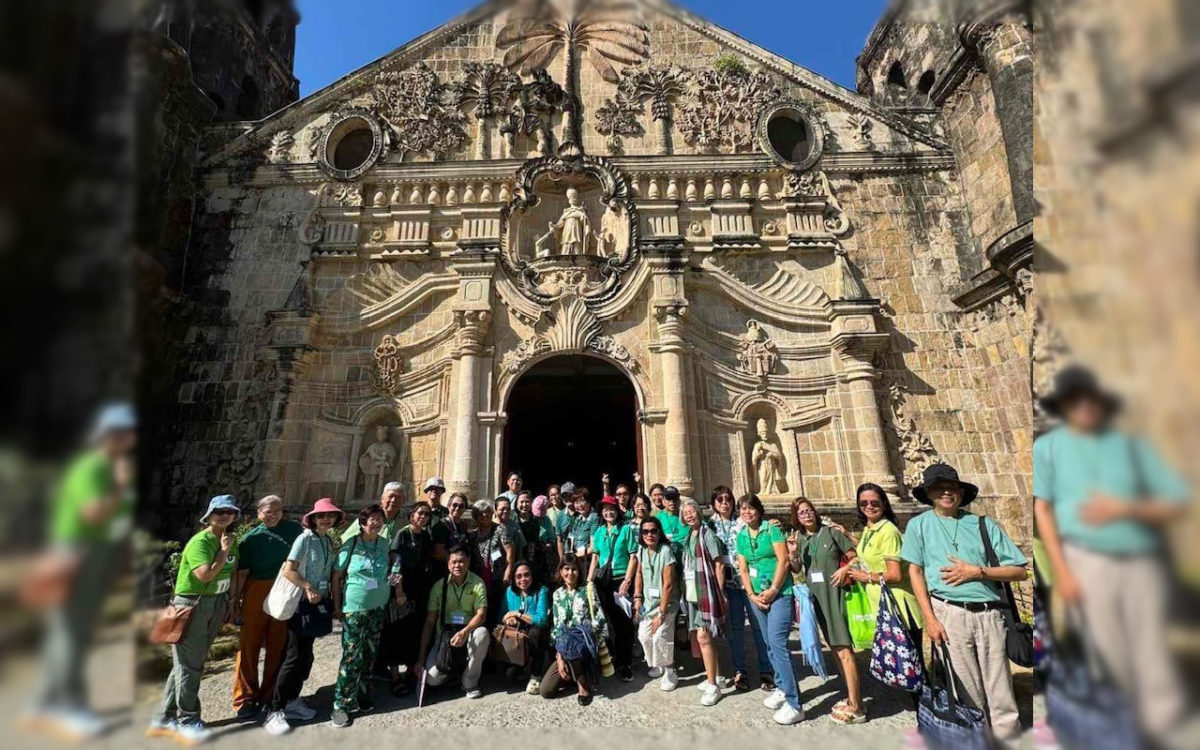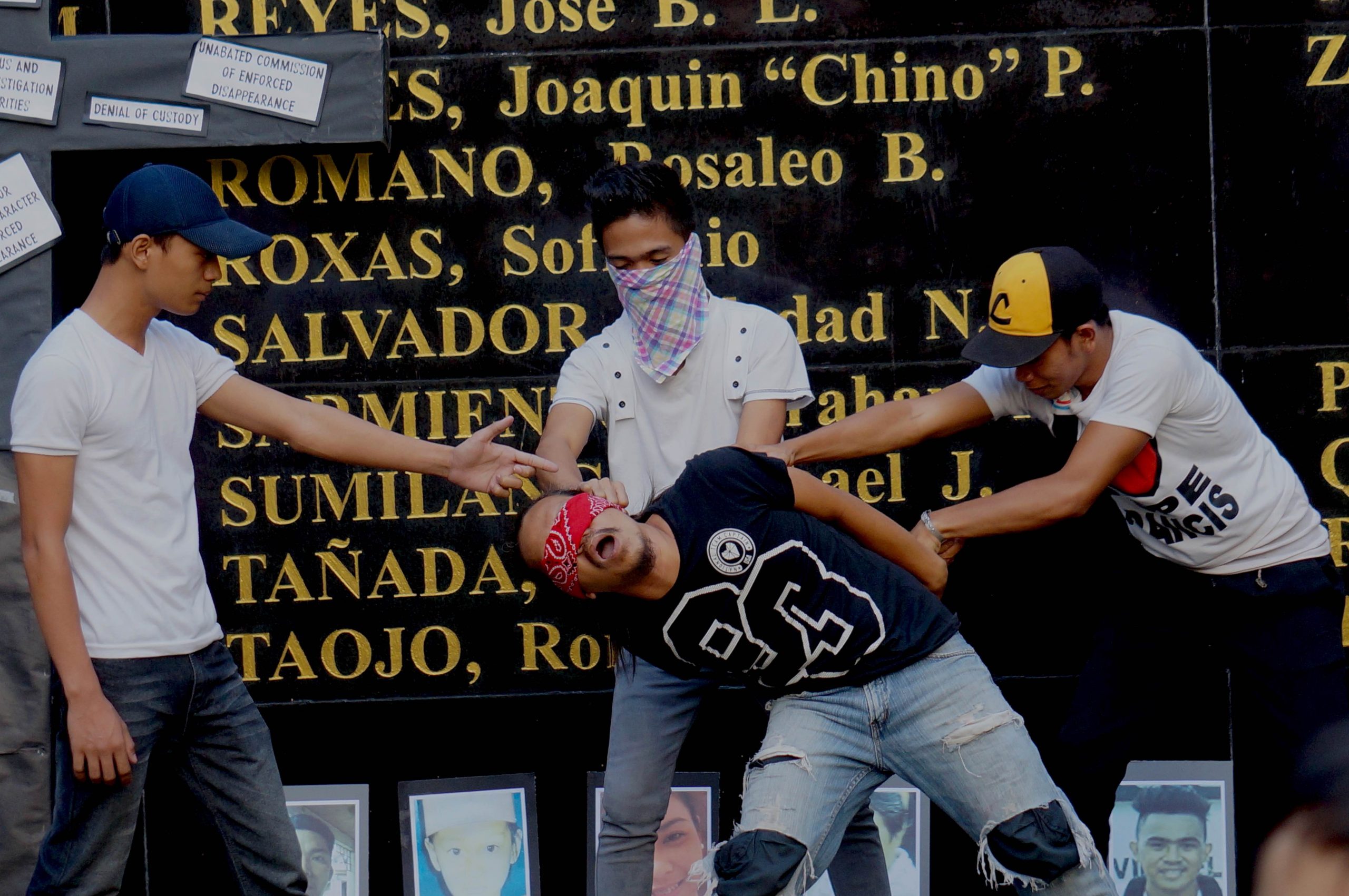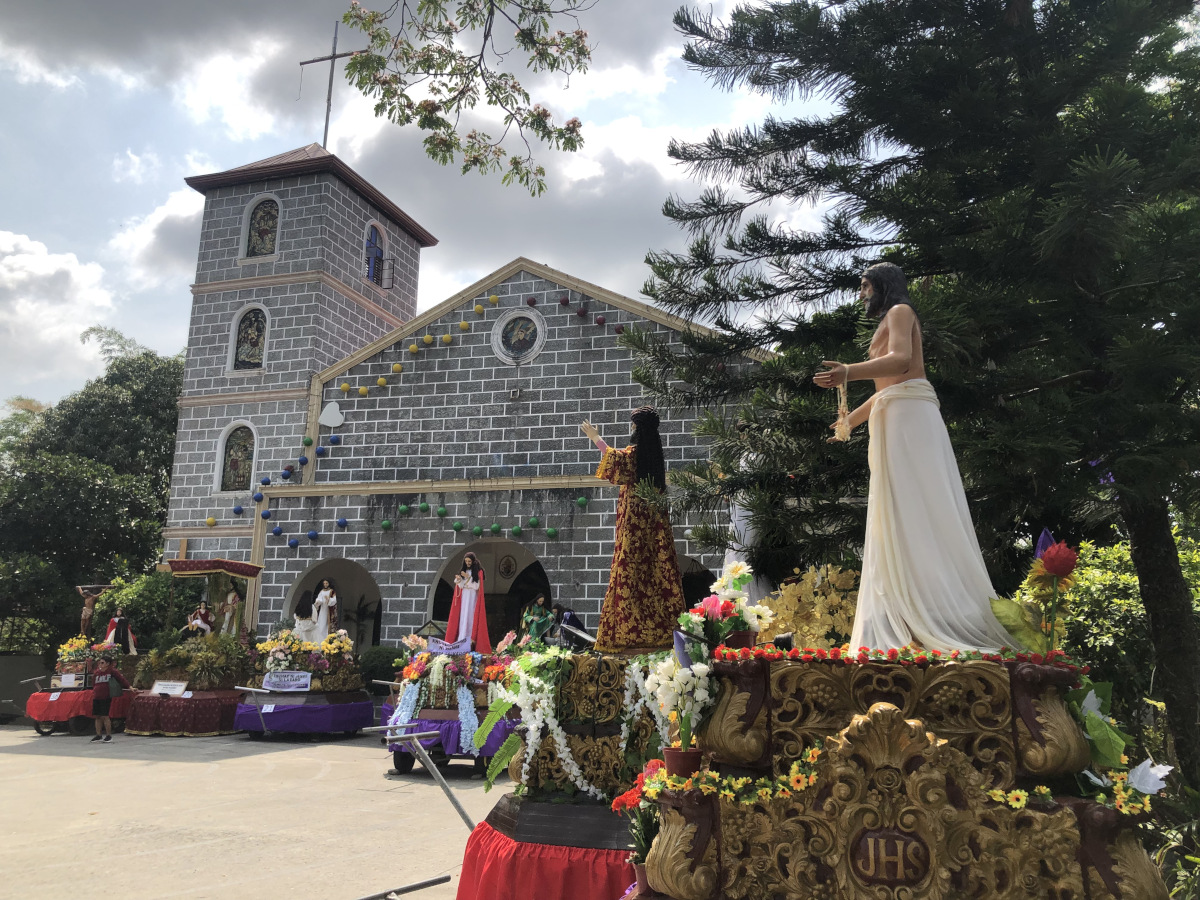This Holy Monday, let’s take a break from political commentaries. In the meantime, allow me to share with you a recent spiritual and gastronomic journey I took to Iloilo and Guimaras, home to some of the oldest Catholic churches in the country.
My sister and I joined the Green Faith Travels’ five-day Lenten pilgrimage, visiting about 20 old churches and chapels in Iloilo and three others on the island province of Guimaras, getting a glimpse into the life of Discalced Carmelite nuns and savoring local culinary delicacies.
We were a group of 34, mostly senior citizens, from various cities in Metro Manila, one from Samar and another from Iloilo City. It was a well-blended group: disciplined, easily bursting into laughter over small things, and turning serious during prayer time.
We left Manila before dawn on March 6. Soon after we landed in Iloilo, we hurried to the St. Joseph the Worker Church in Jaro for a 7 a.m. Mass, then broke bread with Carmelite friars and postulants at the parish community center. The hot molo soup in the buffet breakfast was more than comforting for people who had little sleep the night before.
Most of the postulants at the St. Joseph seminary are Vietnamese. The Carmelites in the Philippines originated from Hue, Vietnam, with four French sisters establishing a Carmelite convent in Jaro in 1923 upon the request of then-bishop James Paul McCloskey in 1921. The order celebrated its 100th year in the country in November last year.
At the nearby Carmelite monastery, the nuns gave us a glimpse of their cloistered way of life by accommodating questions from the curious pilgrims. While most of their time is spent praying solemnly, the sisters said they have recreation time, too. Asked what they do for recreation, one of them said in jest that they engage in beauty pageants. They are called Discalced Carmelites because they either wear sandals or are barefoot. Discalced literally means without shoes. Sandals are worn as a sign of reform and an indication of poverty.
At lunch with the Carmelite seculars, we were served another Ilonggo delicacy called KBL, which stands for kadios, baboy at langka — a stew of pork, pigeon pea and unripe jackfruit.
Of course, the Jaro Metropolitan Cathedral, simply known as the Jaro Cathedral, shouldn’t be missed. It’s a cultural heritage church, the seat of Catholicism in Western Visayas and the center of devotion to the Our Lady of Candles. The cathedral’s façade above the main entrance has stairs that lead to the shrine of Nuestra Señora de la Candelaria, and from there, you get a good view of the bell tower across the street, near a spacious plaza.
When Pope John Paul II visited the Philippines in February 1981, he went to Iloilo and addressed the laity from the balcony and crowned the Nuestra Señora de la Candelaria, proclaiming her as the patroness of Western Visayas.
We then moved to the Most Holy Name of Jesus Church, also called Arevalo Church and Archdiocesan Shrine of Sto. Niño de Arevalo. The parish is called Most Holy Name of Jesus after the name of the Spanish settlement in Cebu called Santisimo Nombre de Jesus.
Just a short walk from the plaza was Camiña Balay Nga Bato, formerly known as Avanceña House, a century-old heritage house where we capped the day with a tour and sumptuous dinner of more native cuisine.
On the second day, we explored the Iloilo countryside, starting with a Mass at the Miag-ao Church, officiated by our pilgrimage chaplain, Fr. Arnold Cabaneros, OCD. Also known as the Sto. Tomas de Villanueva Church, the Miag-ao Church is one of the baroque churches in the country and was included in the Unesco World Heritage List in 1993, along with the San Agustin Church in Intramuros, Manila; Nuestra Señora de la Asuncion in Santa Maria, Ilocos Sur; and San Agustin Church in Paoay, Ilocos Norte.
Breakfast was at the Garin Farm in San Joaquin town. It’s a functional agricultural farm that features a Pilgrimage Hill with a 480-step “Stairway to Heaven” where visitors can walk past tableaus depicting major biblical scenes such as the birth and baptism of Jesus Christ, the last supper, the agony in the garden, the crucifixion, the resurrection, and the ascension. It ends with a depiction of heaven with a huge cross and other sculptures set in immaculate white.
Our tight schedule prepared by Edwin Galvez took us next to the San Joaquin Church, the San Nicolas de Tolentino in Guimbal, the San Juan de Sahagun in Tigbauan, the Immaculate Conception Church in Oton, the Espousal of Our Lady Church in Mandurriao, the Sta. Monica Church in Pavia and the Our Lady of the Smile in Sta. Barbara. All beautiful churches with interesting histories.
Lunch at Sol y Mar Resort by the beach in Tigbauan town was a feast of fresh seafood, and dinner was at Alicia’s Special Batchoy for more gustatory delights.
On the third day, we visited the churches in Iloilo City proper, starting with the Santa Maria Chinese-Filipino Parish in La Paz, with Our Lady of China as its patroness. We had breakfast at Balay Remedios, also known as the Eusebio Villanueva Mansion, before crossing the street to the National Museum-Iloilo, which is housed in the former provincial jail. The museum features the art pieces of Cristhom “Dodoy” Setubal, a retired seafarer and teacher who recreated the facades of Iloilo’s most iconic Spanish structures using scrap and waste materials. The Museo Iloilo in the adjacent building showcases local history, culture and heritage.
The next stop was the San Jose Placer Church, the first church erected in Iloilo City in 1607. This has been popular for being associated with the annual Dinagyang Festival in honor of the Sto. Niño every January.
After a filling snack of Iloilo’s famous Roberto’s siopao, we visited the Nuestra Señora de la Paz y Buenviaje Church in La Paz. These two churches were given to the Augustinian friars in 1868 in exchange for the Jaro Cathedral.
Another fascinating church we visited was the St. Anne in Molo, which is famous for being a feminist church. Its nave bears the images of 16 female saints: Apolonia, Clara, Cecilia, Felicia, Isabel of Hungary, Ines, Juliana, Lucia, Marcela, Maria Magdalena, Monica, Margarita, Marta, Rosa Lima and Teresita.
The last two days were spent on the island of Guimaras, which used to be part of Iloilo province. Getting to Guimaras is much easier now with the roll-on, roll-off cargo ships that transport cars and buses from Fort San Pedro in Iloilo City to Jordan in Guimaras, taking only 15 to 20 minutes.
The St. Isidore the Worker Church in Navalas, Buenavista, is the oldest Catholic church in Guimaras. Built between 1880 and 1885 in an agricultural community, the church is made primarily of limestone.
We also dropped by the Sto. Niño Church, also in Buenavista, and heard Sunday Mass at St. Michael the Archangel Church in Jordan. Before heading back to Iloilo City for our flight back to Manila, we visited the chapel of the Trappist monastery and bought mango-flavored pasalubong.
We did not leave the country’s mango capital without tasting its famous mango pizza and other mango-flavored delicacies. And we hit the beach, too, although it was just a brief 15-minute swim in a “secret” cove called Natago Beach. Dinner at Biking’s Seafood Resto by the beach was worth the long travel after losing our way on the island.
It was a partial break from work that was spiritually enriching and gastronomically satisfying. For those five days, all we did was eat, sleep and travel when we were not praying and reflecting on the passion of Jesus Christ.
To those comparing the problems that Apollo Quiboloy is currently embroiled in with the sufferings of Jesus, I pray, “Father, forgive them, for they know not what they do.”
The views in this column are those of the author and do not necessarily reflect the views of VERA Files.
This column also appeared in The Manila Times.




